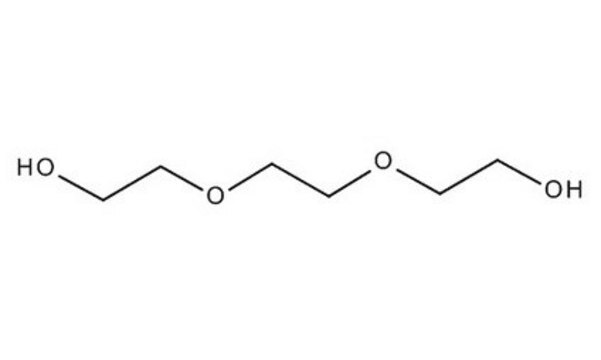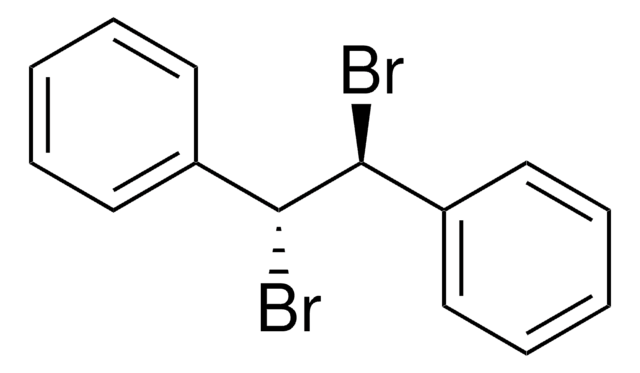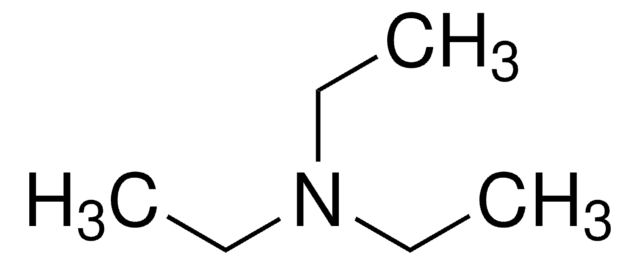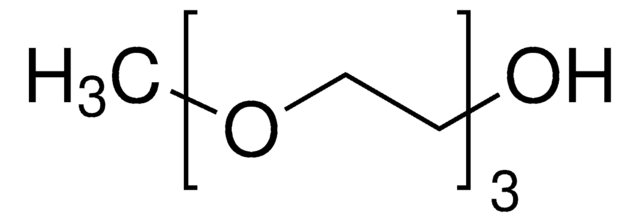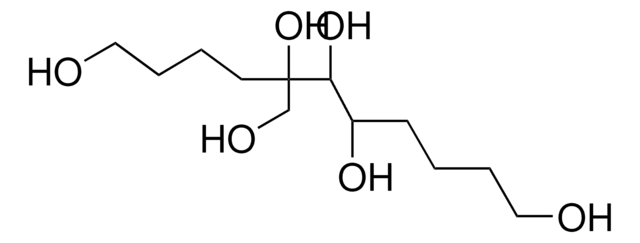T59455
Triethylene glycol
ReagentPlus®, 99%
Synonym(s):
Triglycol
About This Item
Recommended Products
vapor density
5.2 (vs air)
Quality Level
vapor pressure
<0.01 mmHg ( 20 °C)
product line
ReagentPlus®
Assay
99%
form
viscous liquid
autoignition temp.
699 °F
expl. lim.
9.2 %
refractive index
n20/D 1.455 (lit.)
pH
6.5-7.5 (20 °C, 100 g/L)
bp
125-127 °C/0.1 mmHg (lit.)
mp
−7 °C (lit.)
density
1.124 g/mL at 20 °C (lit.)
SMILES string
OCCOCCOCCO
InChI
1S/C6H14O4/c7-1-3-9-5-6-10-4-2-8/h7-8H,1-6H2
InChI key
ZIBGPFATKBEMQZ-UHFFFAOYSA-N
Looking for similar products? Visit Product Comparison Guide
Related Categories
Application
- To prepare fatty acid gelators, which are used to gelate various edible and vegetable oils.
- As a solvent to prepare superparamagnetic iron oxide nanoparticles for in situ protein purification.
- As an absorbent agent in the subsea natural gas dehydration process.
Legal Information
WGK
WGK 1
Flash Point(F)
closed cup
Flash Point(C)
closed cup
Personal Protective Equipment
Choose from one of the most recent versions:
Certificates of Analysis (COA)
Sorry, we don't have COAs for this product available online at this time.
If you need assistance, please contact Customer Support.
Already Own This Product?
Find documentation for the products that you have recently purchased in the Document Library.
Customers Also Viewed
Protocols
99%; Glycerol, ≥99.5%; Tetraethylene glycol, 99%
Our team of scientists has experience in all areas of research including Life Science, Material Science, Chemical Synthesis, Chromatography, Analytical and many others.
Contact Technical Service

